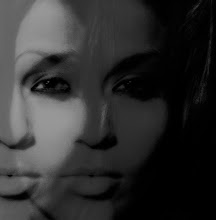Turrell has been described as many things from god-like to genius, yet he identifies most with the term 'painter of light.' The skies have always been our connection to the celestial; ancient civilizations built temples of worship just to view the events of the sky. Light, shadow, time, and mathematics all prevail in the works of James Turrell, and his vision is not so much to capture them, as it is to transform the earth to accommodate such miracles in ways that the eye can experience. Most consider the experience of his works a spiritual encounter wherein one's perceptions are transformed.

The Roden Crater Project, which has been referred to as the Sistine Chapel of the United States, has been undergoing these 'celestial' transformations since 1975. The Roden Crater is said to house more than 1,000 feet of tunnels leading to seven viewing chambers. Within one of these chambers viewers experience "celestial vaulting" a phenomenon in which the sky appears to be domed rather than flat, giving the viewer the feeling that they are standing on the edge of the Earth. It also includes various skyskapes which create views from classical archways at different elevations which operate like a pinhole camera, projecting images of both the moon and sun onto a stone slab in the center of the room. Another will isolate the light of stars more than one billion years old. A space called "The Eye of the Crater" will be located 38 feet below the floor of the Roden bowl.
"It's possible to mix this light that is older than our solar system and have it bottled in a space so that you feel it physically present. You can touch it. You can have new light, eight and a half minutes old, and light that is billions of years old, and you can actually be in close contact with both of them."
"As you go up to the top of the crater, you will have to go through a tunnel, which takes you through a progression of spaces--through the fumarole space, and the sun and moon space. The reason for that is to help you to adapt to the dark. You will come from desert sunlight, which is extraordinarily bright, then you go into these darker spaces. You know the feeling of coming out of a movie theater during the day into this brutal light? This way you'll transition in a series of spaces so your dark adaptation is erased in a reasonable manner."
The Roden Crater Project will be viewable to the public in 2011, but only fourteen people a day will be allowed in: six day-trippers and eight over-night guests, who will sleep in spartan quarters furnished with Turrell-designed tables, chairs, and beds.
Gasworks (above black&white) is shaped like a gas tank. The viewer lies in a bed and enters the interior of the spherical container, and sees his or her whole body enveloped in light. Guard Blue (above blue) is a Cross-Corner Projection piece. This work uses a projector to create light in a shape that seems to have weight and mass.

"...the senses and gratification through the senses, while it can direct you toward the spiritual, is also something that will hold you from it fully. That's the limits of art, and so I don't think that art is terribly spiritual, but it's something that can be along that way, be a gesture toward that. "
Small Interview
_______________________________________________________
Partial information obtained from:
Jeffrey Hogrefe
http://www.metropolismag.com/html/content_0800/tur.htm
Jeffrey Hogrefe
http://www.metropolismag.com/html/content_0800/tur.htm






No comments:
Post a Comment